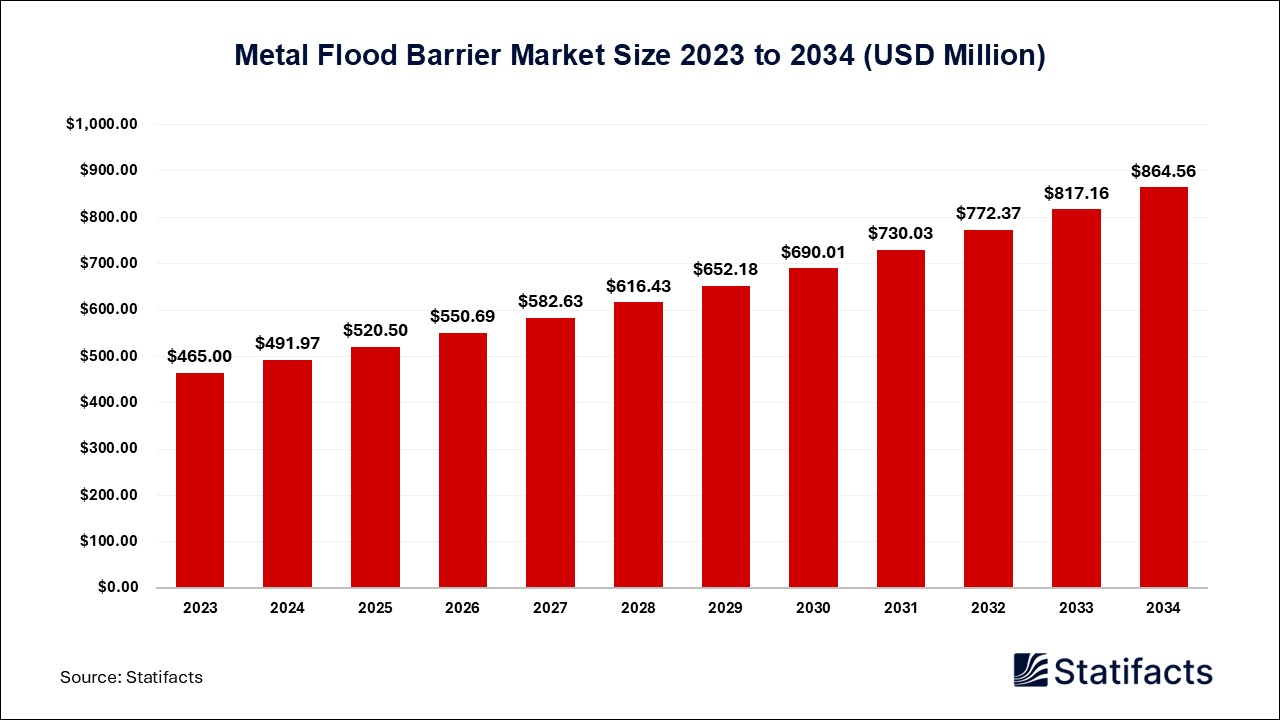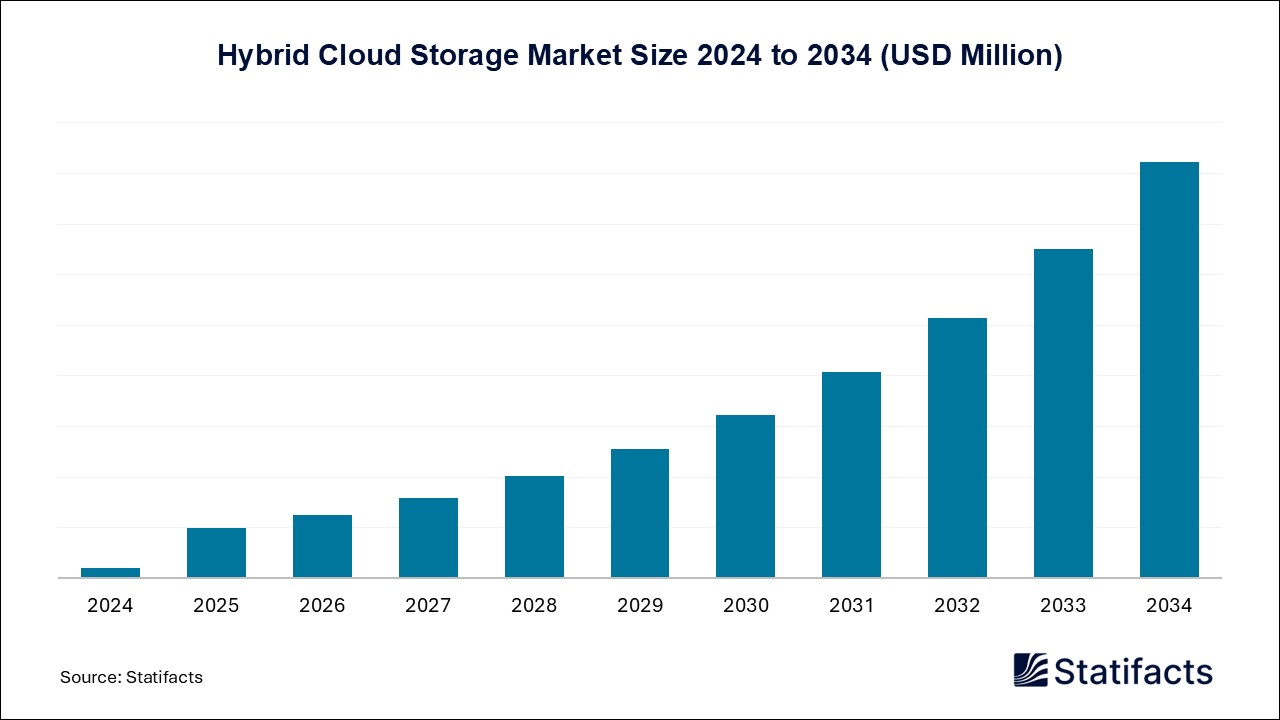Last Updated: 28 Jul 2025
Source: Statifacts
By clicking “Accept All Cookies” you agree to the storing of cookies on your device to enhance site navigation, analyze site usage, and assist in our marketing efforts.
Privacy PolicyAutomotive Powertrain Market (By Propulsion Type: ICE, Electric Vehicle; By Vehicle Type: Passenger Vehicle, Commercial Vehicle; By Application: Engine Controllers, Transmission Drivetrains, Exhaust, xEV; By Region: North America, Europe, Asia Pacific, Latin America, Middle East & Africa) Industry Size, Share, Growth, Trends 2025 to 2034.
The global automotive powertrain market size was accounted at USD 1,062 billion in 2024 and is expected to grow around USD 4,605 billion by 2034, registering a CAGR of 15.80% from 2025 to 2034. The advent of electric powertrains, due to the increasing adoption of electric vehicles and technical advancements such as the development of lightweight materials, better thermal management, multi-speed transmissions, and AI integration in software, is driving growth in the sector.

| Reports Attributes | Statistics |
| Market Size in 2024 | USD 1,062 Billion |
| Market Size in 2025 | USD 1,230 Billion |
| Market Size in 2032 | USD 3,434 Billion |
| Market Size by 2034 | USD 4,605 Billion |
| CAGR 2025 to 2034 | 15.80% |
| Base Year | 2024 |
| Forecast Period | 2025 to 2034 |
The powertrain is used for converting energy (from fuel or electricity) into mechanical motion that boosts the wheels, permitting the vehicle to move forward, backward, and turn. Regular maintenance of the powertrain is crucial to prevent issues, guarantee optimal performance, and avoid highly expensive repairs or potential breakdowns. A global shift toward low-carbon vehicle alternatives such as electric vehicles, along with advancements and funding in electric powertrains, is driving growth in the automotive powertrain market.
Artificial intelligence in the automotive industry is shifting gears, creating vehicles smarter, safer, as well as more efficient. AI-driven autonomous cars are already reducing accidents, reshaping transportation, and easing traffic congestion. Predictive maintenance, generated by AI, assists in detecting potential issues early, thus extending a vehicle’s lifespan. Leveraging AI as well as IoT software development services, the automotive industry is taking vehicle maintenance to the next level. IoT-generated systems continuously trace real-time vehicle conditions, determining data to anticipate maintenance needs.
The automotive powertrain market is primarily influenced by Advancements in transmissions and growing electric vehicle adoption, supported by government incentives, which are boosting fuel efficiency, reducing emissions, and accelerating investment in electric mobility infrastructure.
Advanced transmissions, like dual-clutch and continuously variable transmissions (CVT), are programmed to optimize gear ratios, contributing to a better fuel economy and lessened emissions. The growth of plug-in hybrid electric vehicles (PHEVs) and electric vehicles is a significant trend, contributing to increased investment in battery technology, electric powertrains, and charging infrastructure. Governments are offering incentives such as subsidies and tax credits to encourage the acceptance of electric and hybrid vehicles, which helps reduce upfront expenses and accelerates market expansion.
Obstacles in the automotive powetrain market are the high costs of sustainable powertrain systems pose challenges for smaller manufacturers and limit adoption among price-sensitive consumers, especially in emerging markets.
Sustainable powertrains, including electric vehicle components such as batteries and electric motors, need substantial upfront investment in research and development, developed materials, and specialized producing infrastructure. The high expenses can disproportionately affect smaller automotive firms with limited resources, potentially hampering innovation and market competition. The higher expense of sustainable vehicles can discourage price-sensitive consumers, mainly in emerging markets, which in turn affects market penetration.
Key growth avenues in the automotive powertrain market include the shift toward electric and hybrid vehicles is driving new market opportunities in batteries, charging infrastructure, and smart technologies, while offering a balance of performance, efficiency, and enhanced user experience.
Hybrid vehicles, which include an internal combustion engine with an electric motor, are gaining traction as bridge technology, providing a balance between performance and fuel efficiency. The electrification trend is creating the latest market segments for battery manufacturing, electric vehicle charging infrastructure, and related technologies. Advanced technologies such as artificial intelligence and connectivity are being incorporated into electric and hybrid vehicles to improve powertrain efficiency and raise the driving experience.
The HR18 HEV is designed to address challenges facing OEMs in today’s market directly. HEVs are becoming the most in-demand powertrain category in many markets, requiring many brands and OEMs to make significant investments in bolstering their HEV offering, all while they face unprecedented commercial pressures. By solving the major challenges involved in producing and integrating such a high-performance system, we’re freeing up our OEM partners to focus on their priority innovations and areas of differentiation. -Matias Giannini, Chief Executive Officer of Horse Powertrain
"Developed in bilateral partnership with Intel Automotive, Karma Automotive's SDVA technology will be a gamechanger for our vehicles starting with the 1,000HP+ Karma Kaveya due in 2026, offering unbeatable advantages across a wide range of fronts including computing speed and power, upgradeable functionalities and vehicle connectivity, ease of manufacture, vehicle safety, and, as we're demonstrating at CES, powertrain performance and efficiency," says Marques McCammon, President, Karma Automotive. "SDVA will transform the Karma vehicle experience, and by creating an open ecosystem for SDVA together with Intel Automotive, we'll transform software development practices to benefit the entire industry."
Today’s announcement highlights Canada’s skilled workforce and booming battery ecosystem. Linamar’s groundbreaking project will drive innovation in EV parts and semiconductor manufacturing. It’s a win for the economy, the environment, and Canadian jobs, cementing our country’s position as a leader in the EV supply chain. Hon. François-Philippe Champagne, Federal Minister of Innovation, Science and Industry
The internal combustion engine (ICE) segment dominated the automotive powertrain market in 2024. ICE vehicles take advantage of well-known fuel distribution networks and maintenance facilities. ICE vehicles are anticipated to remain relevant in the automotive market for the foreseeable future, particularly in regions with limited charging infrastructure or customized applications. ICE vehicles, mainly in certain regions and specific vehicle types, can be more affordable than electric vehicles, considering both the initial purchase expense and ongoing operating costs.
The electric vehicle segment is the fastest-growing in the automotive powertrain market during the forecast period. Battery Electric Vehicles (BEVs) are contributing to the expansion due to their zero tailpipe emissions as well as lower operating expenses. Continuous developments in battery technology, like faster charging times and increased energy density, are also contributing to the growing popularity of electric vehicles. Governments globally are actively encouraging the acceptance of electric vehicles via tax breaks, subsidies, and investments in charging infrastructure, thus fueling the expansion of this segment.
The passenger vehicle segment dominated the automotive powertrain market in 2024. Passenger vehicles, including SUVs and sedans, are manufactured and sold in much larger quantities than other vehicle types, such as commercial vehicles. Producers are developing a broad range of powertrain options to cater to the numerous needs and preferences of passenger vehicle buyers, from fuel-efficient options to those with targeted performance and advanced features. They are at the forefront of accepting new powertrain technologies, including all-wheel-drive systems, automatic transmissions, and hybrid and electric powertrains.
The commercial vehicle segment is the fastest-growing in the automotive powertrain market during the forecast period. The commercial vehicle segment, including buses, trucks, and vans, is seeing increased demand due to the expansion of e-commerce, logistics, and industries such as mining and construction. This is operating a larger fleet of commercial vehicles and, consequently, a higher requirement for reliable and efficient powertrain systems. Manufacturers are targeting advancing, innovative, and efficient powertrain solutions for commercial vehicles to improve performance and sustainability, including developments in electric and hybrid technologies.
The engine controller segment dominated the automotive powertrain market in 2024. Internal combustion engines endure as the dominant power source in the automotive industry, boosting the demand for engine control systems. The ECU is a central element in the overall powertrain system, usually working in conjunction with other elements such as transmission, sensors, and actuators. While electrification is gaining traction, engine management systems constantly evolve, implementing advanced technologies to enhance fuel efficiency and lessen emissions from traditional ICEs.
The transmission drivetrains segment is the fastest growing in the automotive powertrain market during the forecast period. Growing knowledge of climate change and stricter emission regulations are propelling automakers to advance and accept electric vehicles. Developments in battery technology, electric motor design, and charging infrastructure have remarkably enhanced the performance and practicality of electric vehicles, thus fueling their adoption. Many governments are providing incentives and subsidies to stimulate the purchase and manufacturing of electric vehicles, leading to the expansion of the electric vehicle drivetrain market.
Asia-Pacific dominated the automotive powertrain market in 2024. The region's strong automotive manufacturing base, mainly in Japan, China, South Korea, and India, contributes remarkably to its leading position in the powertrain market. With the expanded consumer interest in electric vehicles and the incorporation of pro-EV policies and stricter emissions regulations, the passenger vehicle segment, mainly in India and China, is a major contributor to growth, influenced by greater household incomes and metropolitan growth. The expansion is also attributed to the increasing middle-class population, increased vehicle ownership rates, and rapid urbanization in the region.
North America is the fastest-growing automotive powertrain market during the forecast period. A robust automotive industry, combined with developed infrastructure and favorable regulations, fuels expansion. The region is a leader in accepting and advancing cutting-edge technologies such as IoT, AI, and advanced analytics. The increasing requirement for electric vehicles and plug-in hybrids is a major contributor, with the U.S. being a major player.
The automotive powertrain market is greatly competitive, with both established key players and emerging local producers vying for market share. Indian producers and startups are targeting cost-effective solutions, customization, and specialized EV solutions to compete with larger players. Automakers are increasingly bringing powertrain advancement and manufacturing in-house to gain control across critical technologies and lessen reliance on suppliers.
Magna International Inc. holds a prominent market position as a contributing global automotive supplier. The firm's core operations involve programming, engineering, and producing a wide range of automotive systems, modules, assemblies, and components. Magna serves a different customer base, including major global automakers, contributing remarkably to the auto industry.
Robert Bosch GmbH is a producer of technology and services. The firm provides a broader range of products and solutions, such as eBike systems, auto parts and accessories, household appliances, security systems, packaging technology, solar inverters, industry solutions, and business process management solutions.
Continental AG is an automotive firm. It specializes in producing and selling brake systems, elements for powertrains and chassis, instrumentation, infotainment solutions, tires, and technical elastomers. It provides technologies for safety, chassis, motion, brakes, and motion-control systems.
| Regions | Shares (%) |
| North America | 45% |
| Asia Pacific | 25% |
| Europe | 20% |
| LAMEA | 10% |
| Segments | Shares (%) |
| ICE | 70% |
| Electric Vehicle | 30% |
| Segments | Shares (%) |
| Passenger Vehicle | 75% |
| Commercial Vehicle | 25% |
| Segments | Shares (%) |
| Engine Controllers | 35% |
| Transmission Drivetrains | 25% |
| Exhaust | 25% |
| xEV | 15% |
Published by Ajit Bansod
| Application | 2024 | 2025 | 2026 | 2027 | 2028 | 2029 | 2030 | 2031 | 2032 | 2033 | 2034 |
|---|---|---|---|---|---|---|---|---|---|---|---|
| Engine Controllers | 371.70 | 424.29 | 484.19 | 552.45 | 630.19 | 718.70 | 819.45 | 934.10 | 1,064.52 | 1,212.84 | 1,381.44 |
| Transmission Drivetrains | 265.50 | 298.84 | 336.09 | 377.65 | 423.95 | 475.45 | 532.65 | 596.05 | 666.18 | 743.61 | 828.86 |
| Exhaust | 265.50 | 291.46 | 319 | 347.96 | 378.11 | 409.11 | 440.46 | 471.50 | 501.36 | 528.88 | 552.57 |
| xEV | 159.30 | 215.21 | 284.82 | 371.05 | 477.42 | 608.14 | 768.24 | 963.76 | 1,201.88 | 1,491.18 | 1,841.92 |
| Region | 2024 | 2025 | 2026 | 2027 | 2028 | 2029 | 2030 | 2031 | 2032 | 2033 | 2034 |
|---|---|---|---|---|---|---|---|---|---|---|---|
| Asia Pacific | 477.90 | 559.56 | 655.09 | 766.83 | 897.54 | 1,050.41 | 1,229.18 | 1,438.22 | 1,682.64 | 1,968.38 | 2,302.40 |
| North America | 265.50 | 303.76 | 347.48 | 397.44 | 454.50 | 519.68 | 594.11 | 679.08 | 776.07 | 886.76 | 1,013.05 |
| Europe | 212.40 | 243.50 | 279.12 | 319.93 | 366.66 | 420.17 | 481.43 | 551.57 | 631.84 | 723.72 | 828.86 |
| LAMEA | 106.20 | 122.98 | 142.41 | 164.91 | 190.97 | 221.14 | 256.08 | 296.54 | 343.39 | 397.65 | 460.48 |
Last Updated: 28 Jul 2025
Source: Statifacts
| Subsegment | 2024 | 2025 | 2026 | 2027 | 2028 | 2029 | 2030 | 2031 | 2032 | 2033 | 2034 |
|---|---|---|---|---|---|---|---|---|---|---|---|
| Engine Controllers | 371.70 | 424.29 | 484.19 | 552.45 | 630.19 | 718.70 | 819.45 | 934.10 | 1,064.52 | 1,212.84 | 1,381.44 |
| Transmission Drivetrains | 265.50 | 298.84 | 336.09 | 377.65 | 423.95 | 475.45 | 532.65 | 596.05 | 666.18 | 743.61 | 828.86 |
| Exhaust | 265.50 | 291.46 | 319 | 347.96 | 378.11 | 409.11 | 440.46 | 471.50 | 501.36 | 528.88 | 552.57 |
| xEV | 159.30 | 215.21 | 284.82 | 371.05 | 477.42 | 608.14 | 768.24 | 963.76 | 1,201.88 | 1,491.18 | 1,841.92 |
| Subsegment | 2024 | 2025 | 2026 | 2027 | 2028 | 2029 | 2030 | 2031 | 2032 | 2033 | 2034 |
|---|---|---|---|---|---|---|---|---|---|---|---|
| Asia Pacific | 477.90 | 559.56 | 655.09 | 766.83 | 897.54 | 1,050.41 | 1,229.18 | 1,438.22 | 1,682.64 | 1,968.38 | 2,302.40 |
| North America | 265.50 | 303.76 | 347.48 | 397.44 | 454.50 | 519.68 | 594.11 | 679.08 | 776.07 | 886.76 | 1,013.05 |
| Europe | 212.40 | 243.50 | 279.12 | 319.93 | 366.66 | 420.17 | 481.43 | 551.57 | 631.84 | 723.72 | 828.86 |
| LAMEA | 106.20 | 122.98 | 142.41 | 164.91 | 190.97 | 221.14 | 256.08 | 296.54 | 343.39 | 397.65 | 460.48 |
Growth is fueled by tightening emission standards, rising consumer demand for fuel efficiency, and broad adoption of electrification, including hybrid and battery-electric models, as automakers strive to meet regulatory and sustainability targets.
Internal combustion engine (ICE) powertrains remain the largest segment, but hybrid systems are experiencing the fastest growth as they offer fuel economy benefits and serve as a bridge to full electrification. BEVs are also gaining ground with continued electric vehicle adoption.
Passenger cars contribute the lion’s share of powertrain demand in the U.S., but commercial vehicles, including light- and heavy-duty trucks adopting hybrid and electric powertrains, are among the fastest-growing applications.
Key barriers include the high cost and complexity of advanced electric vehicles and hybrid systems, limited EV infrastructure and charging rollout, supply chain risks for batteries and semiconductors, and increasing tariff-driven cost pressures on imports.
Opportunities include continued hybrid-to-EV transition, deployment of AI and connected systems for optimized powertrain performance and maintenance, and growth in Small Modular Reactors (SMRs) of components as electric vehicle penetration deepens. Original equipment manufacturers and tier 1 suppliers like BorgWarner, Continental, and Bosch are investing heavily in these emerging technologies.
To get full access to our Market Insights, you need a Professional Account or a Business Suite.

You will receive an email from our Business Development Manager. Please be sure to check your SPAM/JUNK folder too.

You will receive an email from our Business Development Manager. Please be sure to check your SPAM/JUNK folder too.

Our customers work more efficiently and benefit from



